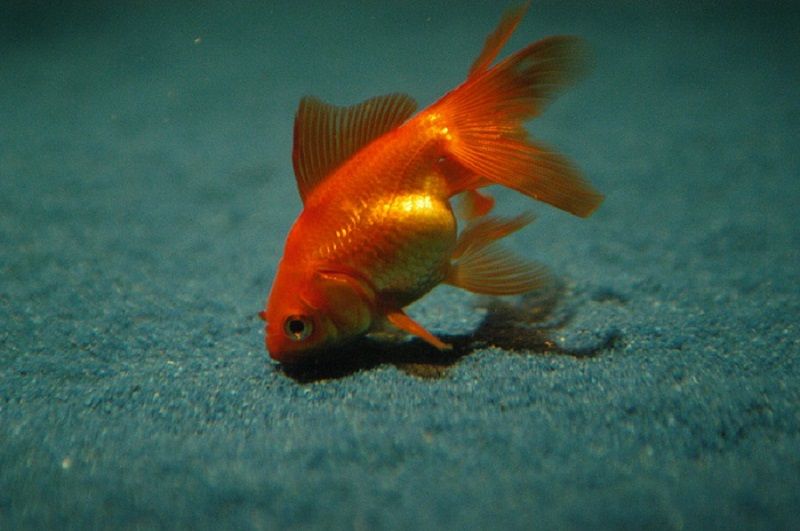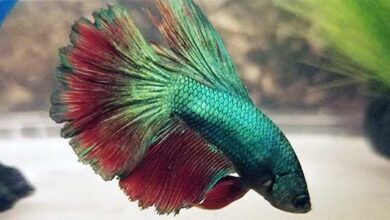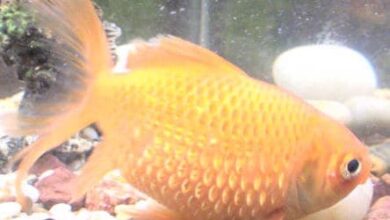Drops in Aquarium Fish

One of the great problems of diseases in fish is that fish do not interact with us like other pets , they are more delicate and inexpressive animals, we have to observe their physiognomy and their diet very well in case we want to detect if they are healthy.
In this article we are going to face a serious disease of aquarium fish called dropsy , for which it is very common for our fish to die.
Fortunately, it can be detected with the naked eye, which favors its treatment if it is approached before it is very advanced, since in that case it could not be cured.
What is dropsy?
- Hydrops is a disease that occurs in fish when they have fluid retention in their body.
- It can be caused by a poor diet or by contamination in the water , affecting your intestines or kidneys. As a result, the fish swells up, loses its appetite and has trouble stopping.
- This disease can be bacterial or viral, so it is necessary to avoid contagion to other fish by isolating the affected one in a different tank, where the treatment will be applied.
- When the disease is bacterial, the fish can be cured with treatment, on the contrary, when it is viral or genetic, there is nothing to do.
Below we will learn more about the causes, symptoms and treatments of dropsy.
Causes of dropsy
There are several bacteria that cause dropsy in fish. One of them is Aeromona sp , which is found in fresh and brackish water. It is related to infections due to: wounds, ingestion of contaminated water or food.
The Mycobacterium bacterium also causes dropsy. This is the fungus that causes tuberculosis and leprosy, although it hardly affects cold-blooded species.
However, it is the cause of Hemorrhagic Septicemia , a bacterial, fatal and contagious disease, the product of an infection that inflames various organs and causes insufficiencies. Among other less frequent, but latent bacteria.
Concluding with the clinical aspect,the accumulation of these bacteria inside the aquarium can be caused by:
- Poor water quality , with excess ammonia, nitrites and nitrates.
- Poor diet . If the fish’s food is not moistened for a few minutes before they eat it, it can swell inside their stomach and clog their intestines.
- Wound infection where newly named bacteria can settle.
- By genetics there are species that are prone to this disease , such as: Guppy , Betta , Zebrafish , Lion’s Head, Telescopes , Kois and Mollys , among others.
Everything you need to maintain your aquarium
- Best digital pH meter
- Best Aquarium Test
- Best anti-algae
- Best bacteria for aquarium
- Best siphoner for aquarium
- Best Aquarium Water Clarifiers
- Best reverse osmosis filters for aquarium
- Best UV lamps for aquariums
How can dropsy be identified?
As we have mentioned, this disease has symptoms that can be recognized with the naked eye:
- Ruffled fins and scales.
- Abnormal swelling of the abdomen.
- Exophthalmia: bulging eyes. Very swollen or sunken.
- Long white stools. (Evidence that something is wrong with the fish’s health)
- Difficulty floating. The fish swims sideways, upside down, or stays very close to the surface.
- Ulcers.
- Bleeding (Internal symptom)
- White guts. Not to be confused with the white point .
- The anus bulges out and becomes red.
- Fallen parts on the fins.

Treatment of dropsy
Drops can be infectious or viral. But since it is cumbersome for an inexperienced to identify what type of condition we are facing, it is recommended to isolate the fish from the rest to avoid contagion, leave it in quarantine and maintain constant supervision of its food, oxygen, water, and medications.
To know how to cure dropsy in fish and administer the appropriate treatment, the guidance of a veterinarian is recommended.
If at the moment you do not have the possibility of going to an expert, there are some basic immediate treatments:
- Feed boiled peas without skin
- Keeping the quarantine aquarium clean
- Use non-iodized salt to eliminate liquids (one level teaspoon of tea per 4 liters)
However, your vet may recommend antibiotics (like Metronidazole) and anti-inflammatories (like Prednisone).
Also drugs such as Amoxicillin, which is a powerful antibiotic that can fight many of the diseases that fish suffer. It serves against the fall of the fins, yagas, skin wounds, whitish eye, and when dropsy is advanced in the fish.
If the fish is cured of dropsy, you must constantly change the water in the tank (at least 20% every 3 days) to remove any residue of the drugs, which in the long run can be counterproductive and aggravate the situation of the animal.
Filter types, brands and filter materials
- Best backpack filter for aquarium
- Best internal filter for aquarium
- Best external filter for aquarium
- Best Fluval filters
- Best Eheim filters
- Best AquaClear filters
- Best Hydra filters
- Best perlon
- Best Activated Carbon for Aquarium Filters
Tips to prevent dropsy in aquarium fish
Drops can be prevented with proper aquarium maintenance , good nutrition, clean water and products in adequate quantities. In this way the chances of our fish getting sick are low.
It is recommended to keep new fish isolated and monitored for a while, before joining them to the main aquarium, in order to rule out any risk that carries a disease from the store and infects the rest.
If the fish has dropsy, increasing the water temperature can slow the development of the condition . However, if the fish has difficulty floating, or bristly scales, it means that it is already in the terminal phase, that is, it is not cured.




